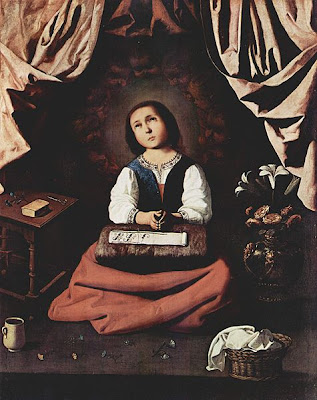
Today, the last Sunday in October, is the Feast of Christ the King in the traditional calendar. It is a good time to remember
Gabriel García Moreno (1821-1875), the President of Ecuador. He was born on Christmas Eve, and died on the Feast of the Transfiguration, martyred because of his zeal for Christ the King.
García Moreno was a descendant of Spanish nobility. Prior to serving as President, he was a journalist and a lawyer. As President, he was responsible for a large number of reforms throughout Ecuadorian society. He promoted universal literacy and, under his leadership, Ecuador excelled in science and education.
An ardent Catholic, García Moreno was instrumental in the consecration of Ecuador to the Sacred Heart of Jesus in 1873. For the consecration, he commissioned a
painting depicting Christ with his Sacred Heart, holding a globe and scepter -- symbols of Christ's Kingship.
García Moreno's Catholicism so enraged the Masonic secret societies that after he was re-elected for a third term they marked him for death. There had already been a failed attempt to assassinate him and during the time leading up to his death he received many warnings. He wrote to Pope Pius IX, "What happiness if your benediction should obtain for me from Heaven the grace of shedding my blood for Him, who being God was willing to shed His blood for us upon the Cross!" To others, he said, "The enemies of God and the Church can kill me, but God does not die."
On August 6, 1875, García Moreno left the Cathedral of Quito where he had been praying before the Blessed Sacrament and was shot and attacked with machetes on the steps outside. His last words were "Dios no Muere!" (God does not die), which echoed his earlier statement that the evildoers could kill him but not his God. His left arm was severed and his right hand cut off. On his person were found a relic of the True Cross, scapulars of the Passion and the Sacred Heart, his Rosary, and a copy of
The Imitation of Christ.
Written on the last page of the book was the private rule of life that he adhered to.
An academic-type lecture by Msgr. Ignacio Barreiro detailing the life of Gabriel García Moreno and his many reforms can be purchased online for $1.50 as an mp3 download from Keep the Faith.
Image:
Gabriel García Moreno, from Wikimedia Commons.
In the public domain.






.JPG)






